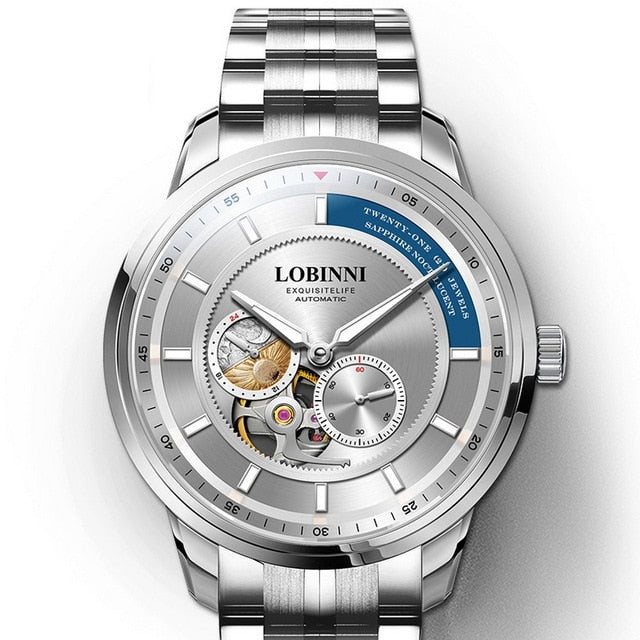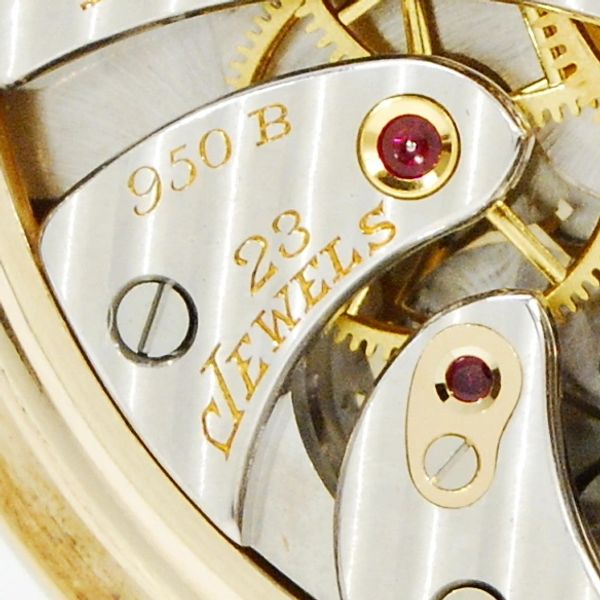The Role of Jewels in Watch Movements
Why do watches have jewels? Jewels play a crucial role in mechanical watches. They are tiny, hard, and often synthetic gemstones placed strategically within the watch’s movement, mainly at pivot points. Their primary function is to reduce friction. This reduction of friction between moving parts helps in maintaining the accuracy and longevity of the watch. The smooth surfaces of jewels, such as synthetic rubies or sapphires, allow the metal components to move with minimal wear and tear. This is essential for achieving precision in timekeeping. Furthermore, the hardness of these jewels protects the metal parts from excessive wear, thus enhancing the watch’s durability. Notably, the placement and type of jewels used in a watch contribute to its overall functionality and performance.
A Brief History of Watch Jewels
The journey of utilizing jewels in watch movements dates back to the early 1700s. A brilliant Swiss watchmaker, Nicolas Fatio de Duillier, made a groundbreaking discovery. He found that small gemstones could drastically reduce the friction within a watch’s movement. This significantly improved the accuracy and lifespan of the watches. As the idea took hold, other jewelers and watchmakers started incorporating rubies and sapphires, known for their hardness and durability.
By the early 20th century, synthetic jewels entered the scene. Auguste Verneuil pioneered a cost-effective method of creating synthetic gemstones in 1902. This innovation made jewels more accessible and reduced production costs. It marked a pivotal shift in watchmaking, allowing more widespread use of jewels in watch movements. Not only did this improvement embrace functionality but also ensured a longer operational life for the watches.
Later innovations included different types of jewels designed to cater to specific needs within the watch’s mechanism. This led to enhancements in watch performance and durability, solidifying the role of jewels not just as luxury items but as essential components in precision timekeeping.
Types of Jewels Used in Watches
Understanding the various types of jewels used in watch movements is key to appreciating their role.
Hole Jewels
Hole jewels, often shaped like tiny doughnuts, are placed on the axle or pivot of a wheel. They support smooth rotations, reducing friction significantly.
Cap Jewels
Cap jewels, sometimes known as capstones, have no holes. They stabilize the balance staff and enhance shock resistance, crucial for durability.
Pallet Jewels
These rectangular gems are located at the ends of a pallet fork in the escapement mechanism. They help regulate the movement’s energy flow between critical components.
Roller Jewels
Found within the pallet fork, roller jewels serve as connection points. These jewels interact with the escape wheel and facilitate precise timekeeping.
Each type of jewel has a specific role that contributes to a watch’s functionality and accuracy.
How Jewels Enhance the Watch’s Functionality
Jewels in watches do much more than dazzle. They boost a watch’s performance in key ways. Within the watch movement, jewels serve as low-friction contact points. This allows gears and pivots to move more freely. Such smooth operation enhances precision. Jewels like synthetic rubies withstand wear well. This trait lengthens a watch’s life. The type and placement of jewels reflect a watch’s design intent. They ensure different parts move correctly. For instance, hole jewels support wheel axles for steady rotation. Cap jewels act to stabilize and provide shock resistance. Pallet jewels help in energy transfer between watch components. Roller jewels, crucial for connection, ensure timing accuracy. Thus, these tiny components play big roles in a watch’s mechanics. Overall, jewels are vital for a well-functioning and durable timepiece.
The Misconception: Jewels as a Sign of Exclusivity
The term ’21 jewels’ often brings luxury to mind. Yet, watch jewels are not about beauty or status. They are mainly for the watch’s function, not flash. The common belief is higher jewel numbers mean more exclusivity. Not true. Jewels inside watches do not show off wealth. They are hidden and serve a mechanical purpose. Many think more jewels equal a higher-end watch. This is a mistake. Jewels are not a sure sign of a watch’s value. Instead, they are purely about improving performance.
In the past, some brands added extra, non-functioning jewels. They did this to suggest a false sense of luxury. Watchmakers would boast high jewel counts to attract buyers. The jewels used were synthetic, not precious gems. This practice misled consumers. It focused on jewel count over watch quality. Since 1974, ISO 1112 stopped this by banning such ads. It’s clear jewel count alone doesn’t define a watch’s worth.
True watch value lies in craftsmanship and precise engineering. The right jewel count aids in accuracy and durability. But beyond the functional need, more jewels are not always better. They do not necessarily add to the watch’s exclusivity or price. It’s essential to know the real role of jewels. They reduce friction, not add prestige. This knowledge helps debunk the myth around watch jewels.
 Understanding Jewel Counts in Different Watches
Understanding Jewel Counts in Different Watches
Understanding the jewel count in watches helps us gauge functionality. Different watches use varying amounts of jewels. Higher counts don’t always mean better quality. Let’s explore the significance of jewel counts across various watch types.
Mechanical Watches and Their Jewel Counts
Mechanical watches typically have jewels. These range from 17 for basic models to 25 or more for advanced ones. For instance, a standard ‘fully jeweled’ watch might have 17. An automatic watch often starts at 25. Yet, numbers don’t define the watch’s quality.
Quartz Watches and Jewel Usage
Quartz watches rely less on mechanical movement, so they tend to have fewer jewels. Some have none at all, as their electronic components rule out the need. Those with jewels, usually have between 5 and 10 to lessen friction for any moving parts they might have.
The Impact of Complications on Jewel Counts
Watches with extra features, like chronographs or calendars, may have more jewels. Added functions mean more parts inside and a need for more jewels to assist those parts. The jewels counteract wear and aid in maintaining precision.
Mechanical versus Quartz Movement Jewel Use
When comparing mechanical and quartz watches, jewel use is a key difference. Mechanical watches require jewels for their many moving parts. In contrast, quartz watches may have fewer jewels or none. Jewels help mechanical watches by reducing friction. This allows precise and smooth movement. While quartz watches need less or no jewels due to fewer moving parts. It is not the number but the presence of jewels that matters in quartz movements.
The True Value of Watch Jewels
The value of watch jewels goes beyond their sparkle. These tiny synthetic stones in a watch movement hold no significant monetary worth. Instead, their true value lies in their utility. Watch jewels are essential for reducing friction between metal parts. This reduction in wear and tear enhances a watch’s precision and extends its lifespan. Their presence reflects the craftsmanship and complexity of the timepiece.
The number of jewels is a measure of a watch’s mechanical features, not its luxury status. It’s important to understand that a high jewel count doesn’t automatically imply a higher quality or price. Instead, the focus should be on the jewels’ role within the movement. Jewel counts may vary, with more complex movements necessitating more jewels.
Mechanical watches often possess jewels due to their intricate movements. Quartz watches might have fewer or no jewels at all, as they operate with fewer moving parts. Therefore, when evaluating a watch, consider the movement type and the function of the jewels, not just their quantity. In essence, watch jewels are about efficient function, durability, and precision, not just decoration or perceived value.




